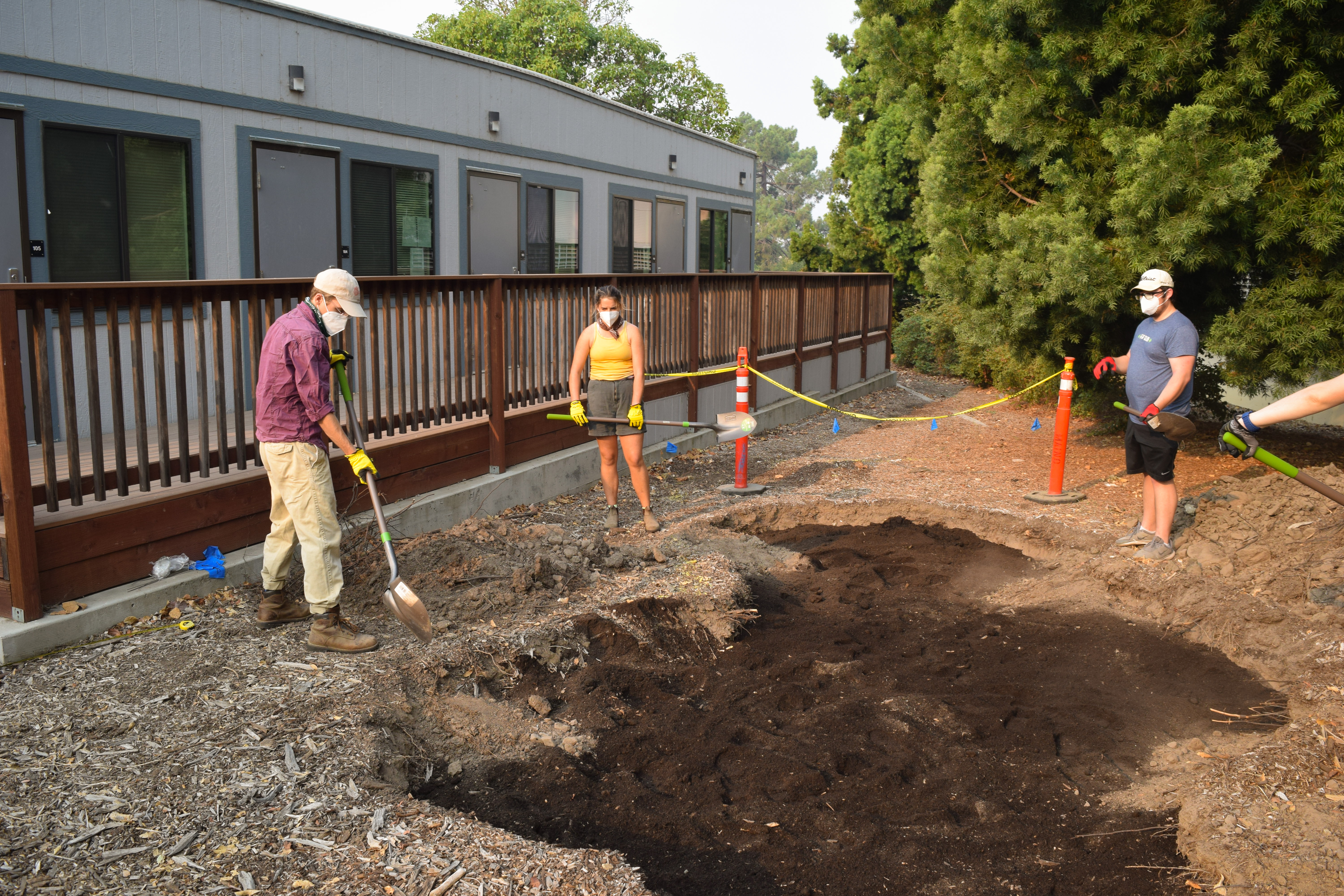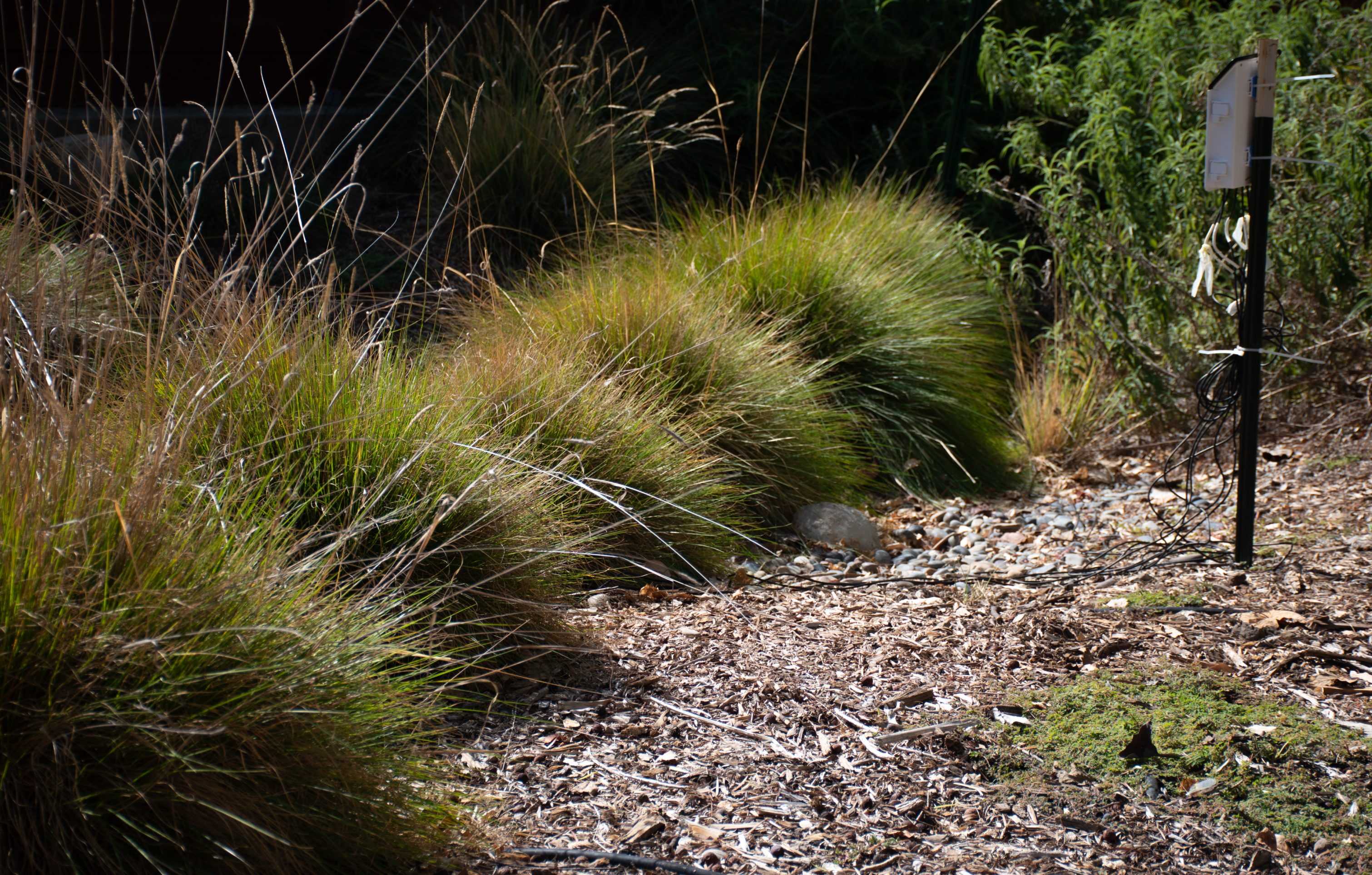Rain Garden Flourishes at Cal Poly
By Simeon Johnson
There is often a disconnect between the design, implementation and maintenance of sustainable development. However, Cal Poly’s chapter of the Student Leadership in Green Infrastructure (SLGI) network is working to change that. Founded in 2016 by UC Davis professor Kevin Perry, SLGI is an opportunity for students to engage in hands-on design-build of green infrastructures such as rain gardens and swales; Cal Poly’s rain garden is a model example.
Over the 2019-2020 academic year, a team of students advised by landscape architecture faculty Ellen Burke and Joseph Ragsdale designed and built the rain garden. The team reimagined a small space next to building 26 and constructed its design — displaying sustainable stormwater management practices — on a budget of less than $5,000.


Students dig the basin and haul rock and soil with shovels and wheelbarrows
Students were tasked to resolve technical details, such as calculating stormwater estimates, managing a budget and responding to changes in the field. A challenge students encountered was that many initial plant choices were no longer available due to the COVID-19 pandemic. They needed to adjust their concepts to match the vendor’s stock, a typical issue in practice. Persisting through, students successfully executed the project from initial site analysis through construction, providing them with a tremendous confidence boost and a renewed passion for their work.
Students advised by landscape architecture faculty member Bret Betnar carried on with the project’s second phase for an additional year, exploring monitoring techniques to track its performance and gather information for future research.
“Many urban stormwater systems can have issues with increasing soil salinity over time, so we are using our measurements from this year as our baseline,” Betnar stated. “Over the long-term lifespan of the rain garden, we will be tracking salinity to see if any significant changes may affect plant growth.”


1. Sensors throughout the garden are connected to a basic Arduino computer which records soil conditions 2. Students monitor pollinator activity in the garden
Notably, monitoring is constrained by the small amount of funding available and the expense of specialized equipment.
“Funding for equipment and faculty advisory time is crucial to building this into a sustainable, multi-year opportunity for student engagement with landscape performance,” Burke stated.
While some grants are available, they often require a significant investment of faculty time to obtain, which can be a roadblock delaying projects or altogether preventing them.
“Funding from private donors would be so beneficial in this area,” she added.
The SLGI rain garden construction was made possible by a grant from the Baker-Koob Endowments, which covered $3,680 of project costs and a student presentation at a conference. With funding, the team purchased materials and proposed the project to Campus Facilities. Instructionally Related Activity funds provided by the College of Architecture and Environmental Design covered the installation of the stormwater monitoring equipment, which faculty hope to continue using for several years to gather more information about the performance of stormwater management systems.
Burke observed that students involved in this design-build project were closer to Ready Day One because they were involved in Learn by Doing by producing an idea on paper into reality.
She mentioned several examples of large-scale investments she believes would empower students to be environmental leaders. Among those proposed were a hydrological modeling space to help students better engage with stormwater management and ecological restoration — a large workspace facility with 3D printing equipment, pumps, plumbing and computers — and a working green roof model to be used by the CAED’s interdisciplinary studio and landscape architecture studios.
“Funding landscape performance has the potential to poise Cal Poly’s Landscape Architecture program as a leader in undergraduate studies in California, which benefits its students and the entire state as we confront environmental changes in the coming decades,” Burke concluded.
Help support the future of Learn by Doing and the next generation of landscape architecture leaders by giving to the department or fund that resonates most with you. All gifts will impact students by providing opportunities for achievement and innovation.
Related Content
|
|



